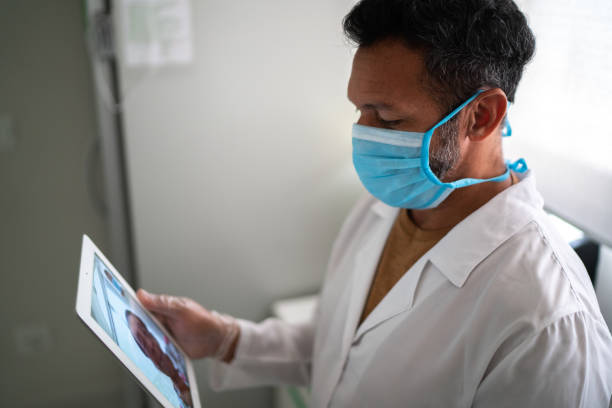Telemedicine and Remote Patient Monitoring
 |
| Patient monitoring solutions |
In the fast-paced world of healthcare, technological advancements continue to reshape the landscape, offering innovative solutions to improve patient care. One such breakthrough is the integration of telemedicine and remote patient monitoring solutions. This transformative approach not only enhances the accessibility of healthcare services but also ensures continuous and personalized care for patients. In this blog, we delve into the realm of telemedicine and explore the pivotal role of patient monitoring solutions in revolutionizing the way we approach healthcare.
Telemedicine Unveiled: Bridging Gaps in Healthcare
Telemedicine, a term synonymous with virtual healthcare, has emerged as a game-changer in delivering medical services remotely. With the aid of digital communication technologies, healthcare professionals can connect with patients, provide consultations, and even monitor their health from a distance. This shift has proven particularly vital in situations where physical access to healthcare facilities is challenging, offering a lifeline for patients in remote areas or those facing mobility issues.
The Rise of Patient Monitoring Solutions
At the heart of this telehealth revolution lies the integration of patient monitoring solutions. These cutting-edge technologies enable healthcare providers to keep a close eye on patients' vital signs, chronic conditions, and overall well-being, all from a remote location. From wearable devices that track real-time health metrics to smart monitoring systems that transmit data securely to healthcare professionals, patient monitoring solutions have ushered in a new era of proactive and preventive healthcare.
Understanding Patient Monitoring Solutions
Patient monitoring solutions encompass a diverse range of devices and technologies designed to collect and transmit health-related data. Wearable devices such as smartwatches and fitness trackers play a crucial role in monitoring parameters like heart rate, activity levels, and sleep patterns. These devices empower individuals to actively participate in their healthcare journey, fostering a sense of responsibility for their well-being.
On a more advanced level, remote patient monitoring systems utilize sophisticated sensors and connected devices to gather comprehensive health data. These systems can monitor vital signs such as blood pressure, glucose levels, and oxygen saturation, providing a holistic view of a patient's health status. The real-time transmission of this data to healthcare providers allows for timely interventions and adjustments to treatment plans, ultimately improving patient outcomes.
Benefits of Integrating Patient Monitoring with Telemedicine
Personalized Care: Patient monitoring solutions enable healthcare providers to tailor treatment plans based on individual health data, ensuring a personalized approach to care.
Early Detection of Issues: Continuous monitoring facilitates the early detection of potential health issues, allowing for prompt intervention and preventing the escalation of medical conditions.
Improved Chronic Disease Management: Patients with chronic conditions can benefit significantly from remote monitoring, leading to better management of diseases such as diabetes, hypertension, and cardiovascular disorders.
Enhanced Patient Engagement: Empowering patients with the tools to monitor their health fosters a sense of engagement and accountability, promoting a healthier lifestyle and adherence to treatment plans.
Reduced Healthcare Costs: Proactive monitoring and timely interventions can contribute to cost savings by preventing hospitalizations and reducing the overall burden on healthcare resources.
The Future Landscape of Healthcare
As we navigate the evolving landscape of healthcare, the symbiotic relationship between telemedicine and patient monitoring solutions will continue to shape the future of medical care. The integration of artificial intelligence, machine learning, and predictive analytics will further elevate the capabilities of these technologies, ushering in an era where healthcare is not only reactive but also predictive and preventive.
Conclusion:
In conclusion, the amalgamation of telemedicine and patient monitoring solutions represents a paradigm shift in healthcare delivery. The seamless integration of these technologies has the potential to break down barriers, improve access to quality care, and empower individuals to take control of their health. As we stand on the cusp of a healthcare revolution, the importance of patient monitoring solutions in driving the efficacy of telemedicine cannot be overstated. Embrace the future of healthcare, where innovation and compassion converge to create a healthier world for all.



Comments
Post a Comment